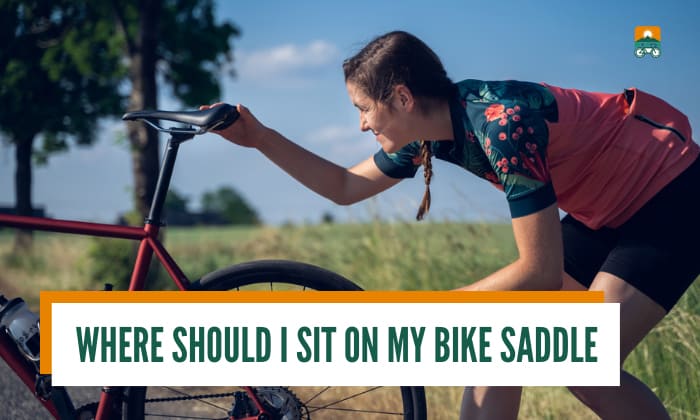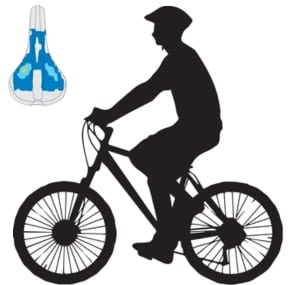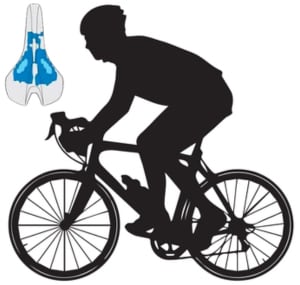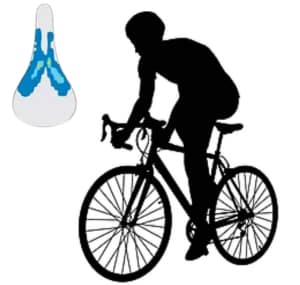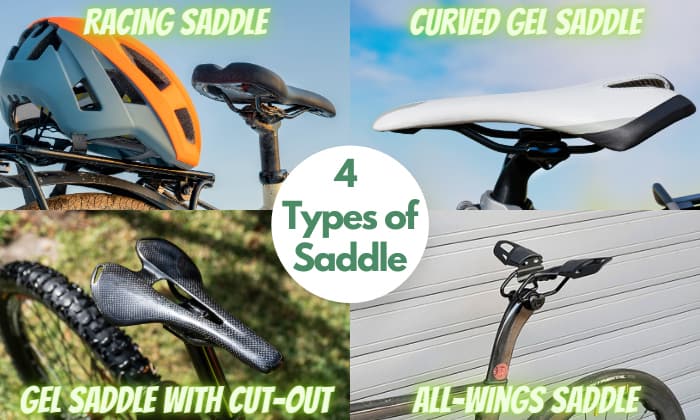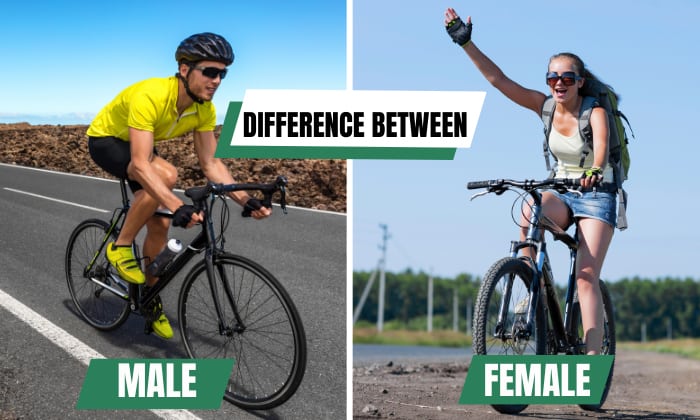Riding a bike is a great way to stay active and explore the outdoors, but have you ever experienced discomfort or pain during your ride? If so, the culprit may be your MTB saddle position.
Choosing the right position can make all the difference in your cycling experience. So how to determine an appropriate position?
The answer is that it can vary from person to person, depending on several factors such as body shape, flexibility, and riding style.
That’s why we’ve put together this guide to help you find the perfect spot to ensure a comfortable ride. So, whether you’re a seasoned cyclist or just starting out, read on to discover, where should I sit on my bike saddle?
Table of Contents
Right Position for Each Different Riding Styles
The ideal sitting position depends greatly on the type of riding you do. For maximum power, control, endurance and enjoyment free from saddle or butt bone pain, it is crucial to adjust your position and equipment for each style.
1. Leisure
For leisure mountain bike riding, especially road biking, upright riding is the best road bike seating position.
Sitting upright with a slight forward lean allows you to see the trail ahead easily. Your sit bones should be supported by the back of the seat, which is the widest part of the saddle. This will help distribute your weight evenly across the saddle and provide the most power.
2. Fitness
If you’re mountain biking for fitness, a slightly leaned-over position provides more efficiency and comfort.
The handlebars are slightly lower than the seat, requiring the rider to hinge forward at the hips with a straight back.
This athletic stance allows for solid pedaling power and handling over variable terrain. The slightly forward lean helps the rider optimize performance while maintaining comfort over long distances.
3. Performance
For performance mountain biking where speed and handling matter most, a hunched-over riding position is the standard, both for efficiency and safety.
Bending at the hips with your back almost parallel to the top tube gives you an aerodynamic stance to slice through the air and take tight turns with precision.
4. Aggressive
Aggressive mountain biking (downhill or freeride) requires an extremely hunched over and stretched-out riding position.
A long reach, very low stack height, and drop handlebars enable you to navigate technical descents at high speeds. For these gravity-fueled riding disciplines, being in an attack position with most of your weight over the front of the bike is key.
5. Aerodynamic
When riding in a more aerodynamic position, it’s important to sit on the bicycle in a position that minimizes wind resistance and allows you to maintain your speed for longer periods. You should lean forward as much as possible, with your hands resting on the aero bars and your elbows tucked in close to your body.
This position helps to reduce drag and improve your aerodynamics, allowing you to ride faster with less effort.
For Each Type of Saddle
Bicycle saddles come in a range of styles balancing performance and comfort for diverse riding needs.
- Racing saddle
A forward seat position is best for racing saddles. Place your sit bones on the narrowest part of the saddle, usually toward the front. This allows maximum leg extension and power transfer for sprinting and climbing.
- Curved gel saddle
A neutral seat position balanced over the saddle’s center works well for curved gel saddles. The gel provides comfort for the sit bones wherever you place your weight. A neutral position gives good versatility for different riding styles.
- Gel saddle with cut-out
Also use a neutral seat position for a gel saddle with a cut-out. Sit with your sit bones spanning the cut-out space, which relieves pressure. The cut-out, combined with the gel, provides a high level of comfort for long rides at a variety of riding positions.
- All-wings saddle
This type of bike seat has large extensions on either side of the saddle that help support the sit bones, which make it the best bike seat for sit bone pain.
You should sit slightly rearward, placing more weight on the rear section of the saddle. The wings provide support for your thighs and help keep you securely in the optimal riding position.
Sitting further back also helps when descending as it centers your weight over the rear wheel and makes longer rides bearable.
Reason for Sitting Properly on a Bike
Sitting on a bike seat correctly is important for comfort, safety, performance, and avoiding injury.
- Ensure your safety
Properly sitting on a bike is essential for a rider’s safety as it allows them to maintain control and balance while riding.
When seated correctly, the rider’s weight is distributed evenly on the bike, reducing the chances of losing balance, especially when taking sharp turns or sudden stops.
As a result, you can also react more quickly to avoid obstacles and avoid the risk of falling off with serious injuries.
- Avoid pain and strain over long rides
A proper saddle position can put excess pressure on your sit bones and distribute weight evenly over this area to prevent compression, so you need to properly sit on a bike so it doesn’t hurt.
On the contrary, it can cause several discomforts and even persistent pain that builds up over time spent in the saddle if you sit incorrectly.
Common issues with improper bike fit include:
-
- Lower back strain from being hunched over the handlebars.
- Knee pain from bending the knees too much or too little.
- Hamstring muscles discomfort from being overstretched.
Most discomfort can be avoided by ensuring the seat height and fore-aft position are properly adjusted to match the rider’s proportions.
Where Should My Sit Bones Be on a Bike Saddle?
Ensuring correct support and placement of your saddle bones is imperative for optimal performance, power generation, endurance, and injury prevention.
- The sit bones bear the majority of weight during riding, so you must sit on the crook of the saddle to have equal distribution and avoid too much pressure on your sit bones.
- An off-center position results in excess strain on one side, decreased control and efficiency, and increased risk of numbness or pain.
- On a bike saddle, your sit bones should rest on the wide rear part of the saddle.
- If the saddle is too narrow, it won’t properly support your sit bones and can cause discomfort.
- If the saddle is too wide, it may chafe the inside of your legs. It’s best to find a saddle that fits the actual width of your sit bones.
Difference Between Men and Women
While women and men cyclists have some average differences in sit bone width, pelvic dimensions and pubic arch height, there is significant overlap between genders such that saddles do not strictly need categorization as “male” or “female”.
1. Male
Sit bone width: 9-17 cm
Narrower and deeper pelvis, with a wider pubic arch and a shorter sacrum
2. Female
Sit bone width: 6-16cm
Wider and shallower pelvis, with a more pronounced curvature of the sacrum
In the past, many bicycle saddles were designed with a longer and more pronounced saddle nose. As a result, female sit bones when cycling receive more pressure due to their smaller sit bone width, which could cause discomfort and pain.
Recognizing these issues, saddles have been designed with shorter and flatter noses in recent years. These newer designs distribute the pressure evenly across the sit bones and reduce the pressure on the perineal area, making for a more comfortable and healthy ride.
This has changed how a woman sits on a bike saddle nowadays. They no longer have to search for a proper bike saddle for narrow sit bones with several considerations as both males and females can now use the same type of saddle.
How Far Back to Sit on a Bike Saddle?
The horizontal distance from the center of the bottom bracket to the saddle reference point (SRP) is a common measurement in the field of bike fitting, as it helps to determine the fore-aft position of the saddle.
It is a fixed point on the saddle that serves as a reference for measuring saddle position.
1. Measure the horizontal distance from the center of the bottom bracket to the SRP
Place the bike with the back wheel against a wall and measure the horizontal distance from the wall to the center of the bottom bracket and the distance from the wall to the SRP.
The distance from the center of the bottom bracket to the SRP can then be calculated by subtracting the SRP to wall measurement from the bottom bracket to wall measurement.
This measurement can be used to fine-tune the fore-aft position of the saddle for optimal comfort and efficiency.
2. Use a plumb bob
You should begin by tying a weight to a string to make a plumb bob. Then hold the string against the tip of your saddle, run it down the length of your thigh, and see where it intersects your leg.
The intersection point should be just in front of the pedal axle when the crank is at the bottom of the stroke. If not, the saddle needs adjustment.
Conclusion
We hope that by providing this helpful information, you will have your own answer to the question, “where should I sit on my bike saddle?” and make your rides more enjoyable.
While the exact position will vary depending on factors such as the type of riding you are doing, your physical attributes, and your personal preference.

“I ride my bike to work for years, but is that enough? Our carelessness towards our surroundings has taken a toll on the environment. And now, everyone is responsible for changes; even the most minor contribution is counted. With this hope and spirit, I started with my partner to establish Biketoworkday to help more individuals commute to their work sites on their bikes.”

